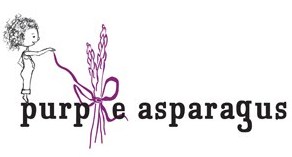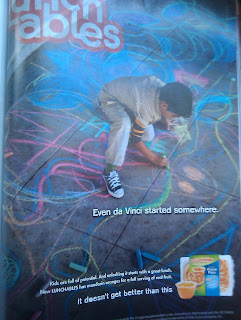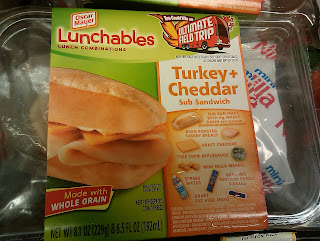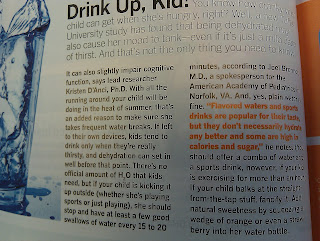I wonder what they eat for school lunch?
My last day in the kitchen. I have feelings towards this experience that mirror how I feel during the school year. At the beginning everyone is crisp and new, rested and energized for a new school year. The middle months are just work, work, work. As the school year wraps up, I’m tired, sad, and relieved. Since I only volunteered a little, it flew by so I’m not tired, but there is a sadness.
I found
Common Threads to be open and welcoming. I didn’t notice any in-fighting among people employed by the organization. The staff was happy and friendly. It left an impression on me. Working in public education I see a fair amount of disgruntled people. On bad days, I put myself in that category too. Sometimes it seems like I have more work than I can complete. I have to stay late every day (since becoming a mother, I can’t take work home anymore because it doesn’t get done. Now that I’m blogging, I can’t get home stuff done either).
The chef assigned me to a different station today to help out another group. Today’s lesson was about India. I was setting up and missed the chef’s usual lecture about the food and its preparation. My volunteer friend and I were running around making sure that each station had all of the ingredients that it needed. We ran out of a couple things and a different helper left to buy some yogurt and yellow onions.
I had grown comfortable working with the other volunteer and was a little bummed that I was moved, but it would be a chance to meet some new people. I told the other volunteer I going to be at a different station and she said, “Really? I need you here. Oh well.” Since she was a fantastic chef, I knew she’d be fine.
The: Chicken Korma, Vegetable Biryani, and Apricot and Mango Chutney. Each station made the korma, biryani and one chutney.
This new group was all girls and they were playful. I heard one girl tell another, “Don’t be chopping my green beans.” Written it looks like a threat, but it was said in a humorous way and made the other girl laugh. One of the girls was peeling ginger and said, “I’m so happy I don’t have to do this at home.” My heart sank. Then she added, “My sister is allergic to ginger and she swells up if she eats it.” That’s understandable!
The chicken korma was straightforward to prepare. Lots of chopping, throw it in a pan, and then just let it simmer on the stove. But the vegetable biryani seemed more complex because there were many steps, but they were done over a very short period of time as the rice was pre-cooked.
After the chopping, I worked at the stove, but I flitted back and forth a bit too. I set the chicken korma on the stove, put a lid on it and left it to do its thing. Then I had one of the girls help with the vegetable biryani. She deftly flipped and stirred; she made it look easy. Like I said before, little kids don’t hesitate. She followed the recipe instructions with my help and ba-da-bing that dish was done.
Meanwhile the camp counselor had been working on the apricot chutney. It smelled amazing. But unfortunately there must have been miscommunication because she put it on the stove and left it there. There is a lot of action on the stove top as two stations share one. It wasn’t until many minutes went by that I realized the chutney was burning. I was running around back to the station and back to the stove. I wasn’t sure it was even our pot. I tried to salvage the dish by soldiering forward with the rest of the directions, but it didn’t work. The chef came over, tried to work some magic, but at that point the chutney was DOA.
Up until the chutney flopped, I had thought to myself, “Making chutney is pretty darn easy.” After that happened, I wasn’t too sure. Actually the feeling that chutney is somehow easy has stayed with me and I do want to make some at home. Thankfully the other group’s mango chutney turned out beautifully.
The kids started their clean up jobs, food was plated, and we all stood around a sampled our creations. Delicious and fun! I said goodbye to the kitchen staff and thanked them for the opportunity to participate. I was touched by the experience and sad that it was over.
***
“We make a living by what we get, but we make a life by what we give.” – Winston Churchill
What stuck with me (I’m writing this with a migraine so hopefully it comes together):
1) Kids can cook and enjoy it. Americans buy too much food we could make at home. I’m guilty too. All I need is a little help watching the kid and I’m able to make delicious food for the family. My son is little but says, “See it?” when I’m cooking something at the stove. Cooking is inherently intriguing and fun. I will make an effort to include him in food preparation as he gets older, but considering his current interest level I’m hoping it will be easy.
2)
Volunteering is more about “you” than “them.” Common Threads helped its campers in tangible ways by teaching them basic cooking skills. Other gifts given to the campers are harder to quantify. I believe they experienced a boost in self-confidence in a “look what I did” kind of way. For me it was wonderful to help out and observe kids having a good time in the kitchen. I feel like I didn’t do very much for any one child, but what I did made a difference in my own life. I feel better about humanity and grateful for the good things in my life. Volunteering feels good.
3) More confidence in my own kitchen. Part of me thinks, “If the kids can do it, so can I!” I have already made one of the rice and lentil dishes as well as the mango condiment Amba. My husband raved about the rice and lentil dish and asked that I put it into my “regular rotation” of home meals. No problem there! Personally I found the Amba to be refreshing and even spicy in a pleasant way. I’d love to eat that once a month.
4) Wanting to do more. I find myself wishing there was more I could do. Certainly I could make a long-term volunteering commitment with Common Threads (after the project is over naturally). I find myself asking what else can I do to help kids and families who have limited incomes?
Thanks for joining me for the series. Someone asked what the “bear claw” was (it’s not a pastry!). It’s a way of holding your non-dominant hand while cutting so that you lessen any chance of cutting yourself. Fingers are sort of folded in. The technique is shown in the following video
http://www.youtube.com/watch?v=e6AR9p2VOwE Any remaining questions?














